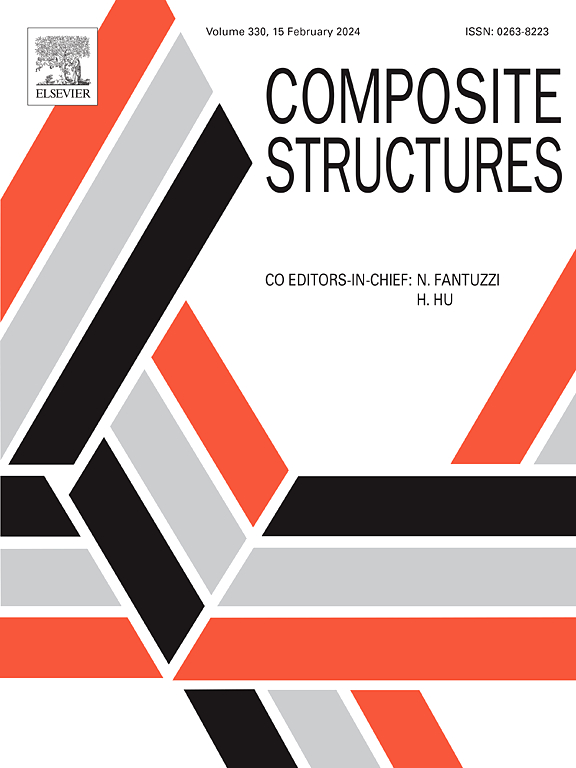雷电流波形下航空紧固件的电能和过压特性分析
IF 6.3
2区 材料科学
Q1 MATERIALS SCIENCE, COMPOSITES
引用次数: 0
摘要
了解和控制紧固件和连接结构中的火花对飞行安全至关重要,尤其是在油箱中。本研究调查了雷击时紧固件空腔内耗散的电能与压力积聚之间的关系。实验在铝和碳纤维增强聚合物 (CFRP) 样品中安装的紧固件上进行,雷电流波形范围为 1 kA 至 10 kA。敏感性分析评估了电流峰值、间隙配合、样品材料、极性和紧固件涂层等关键参数对压力上升和能量耗散的影响。与之前的研究相比,观察到的电能高达 80 J,压力水平达到 600 bar,这是前所未有的。压力-能量关系呈现近似线性趋势,而压力与间隙拟合则呈现非线性关系。紧固件涂层和样品材料对结果有显著影响,在某些情况下压力变化可达 10 倍。本文章由计算机程序翻译,如有差异,请以英文原文为准。
Electrical energy and overpressure characterization of aeronautical fasteners submitted to a lightning current waveform
Understanding and controlling sparking in fasteners and jointed structures is crucial for flight safety, particularly in fuel tanks. This study investigates the relationship between dissipated electrical energy and pressure buildup within fastener cavities during lightning strikes. Experiments were performed on fasteners installed in aluminum and Carbon Fiber Reinforced Polymer (CFRP) samples, with lightning current waveforms ranging from 1 kA to 10 kA. A sensitivity analysis evaluated the influence of key parameters, such as current peak, clearance fit, sample material, polarity, and fastener coating on pressure rise and energy dissipation. Electrical energy up to 80 J and pressure levels reaching 600 bar– unprecedented compared to prior studies– were observed. The pressure-energy relationship showed an approximately linear trend, while pressure exhibited a non-linear dependence on clearance fit. Fastener coating and sample material were found to significantly influence the results, with pressure variations reaching up to a factor of 10 in some cases
求助全文
通过发布文献求助,成功后即可免费获取论文全文。
去求助
来源期刊

Composite Structures
工程技术-材料科学:复合
CiteScore
12.00
自引率
12.70%
发文量
1246
审稿时长
78 days
期刊介绍:
The past few decades have seen outstanding advances in the use of composite materials in structural applications. There can be little doubt that, within engineering circles, composites have revolutionised traditional design concepts and made possible an unparalleled range of new and exciting possibilities as viable materials for construction. Composite Structures, an International Journal, disseminates knowledge between users, manufacturers, designers and researchers involved in structures or structural components manufactured using composite materials.
The journal publishes papers which contribute to knowledge in the use of composite materials in engineering structures. Papers deal with design, research and development studies, experimental investigations, theoretical analysis and fabrication techniques relevant to the application of composites in load-bearing components for assemblies, ranging from individual components such as plates and shells to complete composite structures.
 求助内容:
求助内容: 应助结果提醒方式:
应助结果提醒方式:


